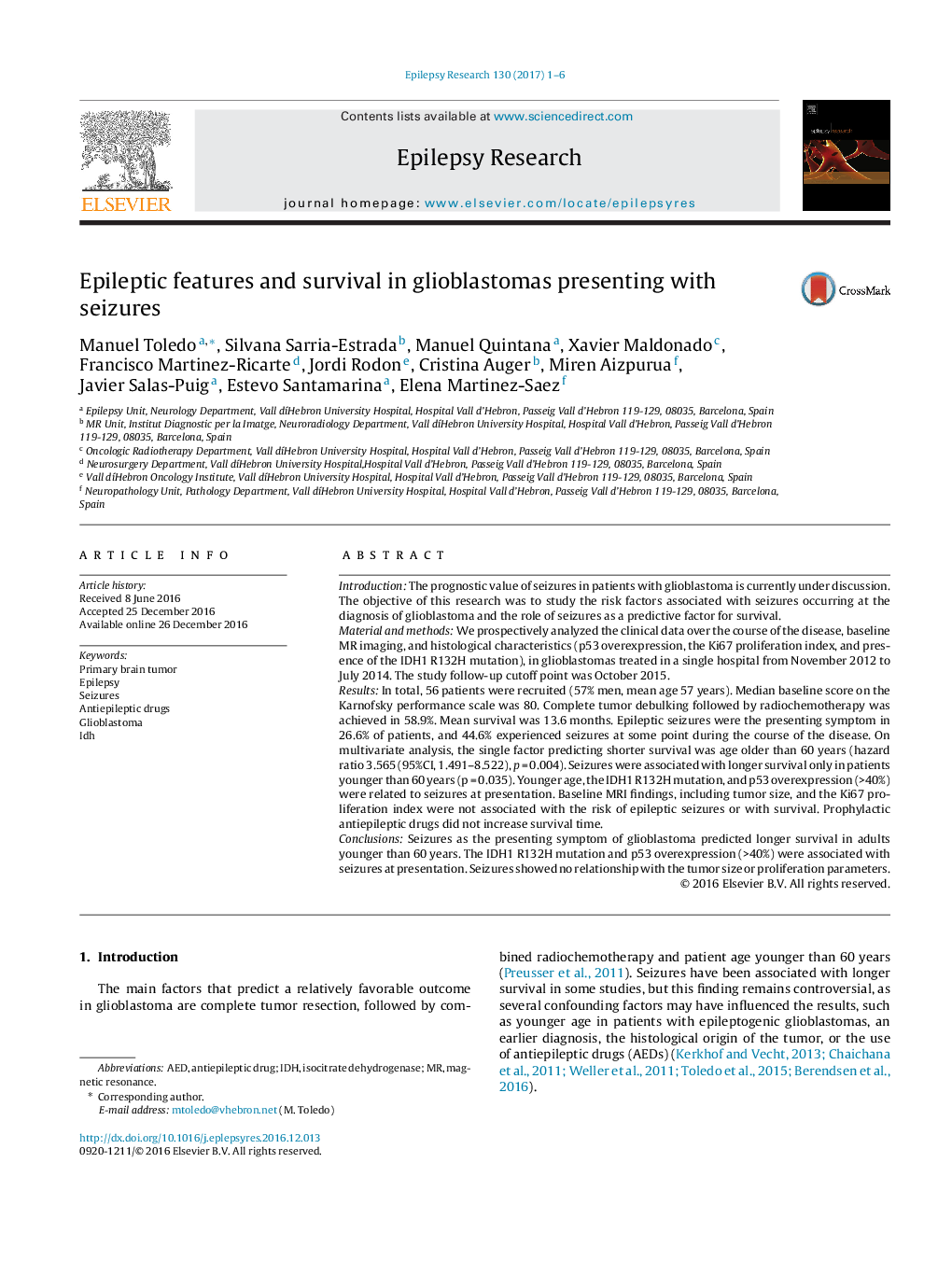| کد مقاله | کد نشریه | سال انتشار | مقاله انگلیسی | نسخه تمام متن |
|---|---|---|---|---|
| 5628747 | 1579893 | 2017 | 6 صفحه PDF | دانلود رایگان |
- Seizures as the presenting symptom of glioblastoma predict longer survival in adults younger than 60 years.
- The IDH1 mutation and p53 overexpression (>40%) are associated with seizures in patients with glioblastoma.
- The use of antiepileptic drugs, including valproate, does not increase survival.
- According to MR imaging findings and histological analysis, seizures cannot be considered a manifestation of early-stage glioblastoma.
IntroductionThe prognostic value of seizures in patients with glioblastoma is currently under discussion. The objective of this research was to study the risk factors associated with seizures occurring at the diagnosis of glioblastoma and the role of seizures as a predictive factor for survival.Material and methodsWe prospectively analyzed the clinical data over the course of the disease, baseline MR imaging, and histological characteristics (p53 overexpression, the Ki67 proliferation index, and presence of the IDH1 R132H mutation), in glioblastomas treated in a single hospital from November 2012 to July 2014. The study follow-up cutoff point was October 2015.ResultsIn total, 56 patients were recruited (57% men, mean age 57 years). Median baseline score on the Karnofsky performance scale was 80. Complete tumor debulking followed by radiochemotherapy was achieved in 58.9%. Mean survival was 13.6 months. Epileptic seizures were the presenting symptom in 26.6% of patients, and 44.6% experienced seizures at some point during the course of the disease. On multivariate analysis, the single factor predicting shorter survival was age older than 60 years (hazard ratio 3.565 (95%CI, 1.491-8.522), p = 0.004). Seizures were associated with longer survival only in patients younger than 60 years (p = 0.035). Younger age, the IDH1 R132H mutation, and p53 overexpression (>40%) were related to seizures at presentation. Baseline MRI findings, including tumor size, and the Ki67 proliferation index were not associated with the risk of epileptic seizures or with survival. Prophylactic antiepileptic drugs did not increase survival time.ConclusionsSeizures as the presenting symptom of glioblastoma predicted longer survival in adults younger than 60 years. The IDH1 R132H mutation and p53 overexpression (>40%) were associated with seizures at presentation. Seizures showed no relationship with the tumor size or proliferation parameters.
Journal: Epilepsy Research - Volume 130, February 2017, Pages 1-6
